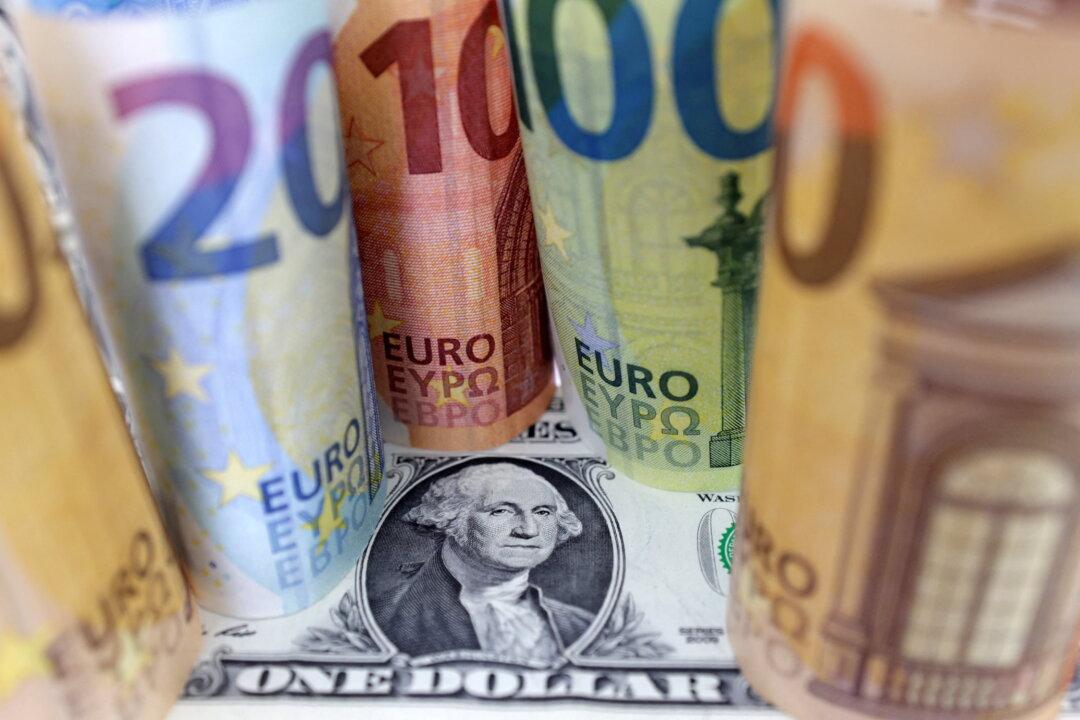LONDON—The euro hit a nine-month peak against the dollar on Monday as comments on European interest rates signaling additional jumbo rate rises contrasted with market pricing for a less aggressive Federal Reserve.
The euro reached as high as $1.0927, breaking the recent peak of $1.08875, to trade at its highest level since April last year.





